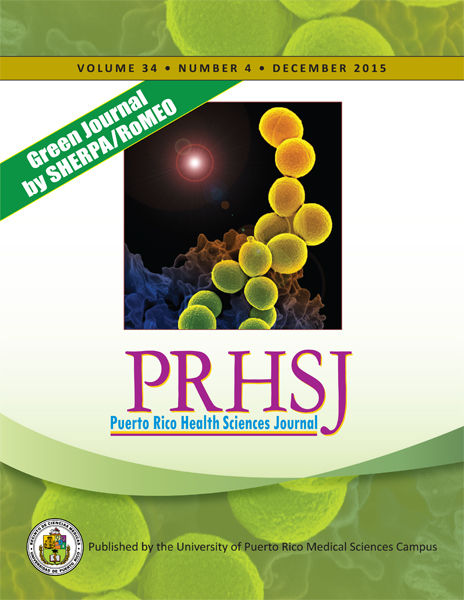Abstract
Objective: Epiploic appendagitis (EA) is a rare entity caused by the inflammation of the appendix epiploica. It is a benign and self-limited condition presenting as acute onset abdominal pain. The inaccurate diagnosis of EA can lead to unnecessary hospitalization, antibiotic therapy, and surgery. Our aim is to describe the common clinical features of patients who were diagnosed with EA over a 2-year period at the San Juan Veterans Administration Hospital. Methods: A retrospective descriptive review of the records of all patients diagnosed with EA from 2007 to 2009. The clinical data was obtained through record review. Diagnoses were confirmed by 2 radiologists reviewing imaging studies. Results: Eight patients were included in the study. All were male with a mean age of 58 years. Seven patients were overweight as per body mass index (BMI) scale. All had localized focal, non-migratory abdominal pain, most (75%) in the left lower quadrant. Nausea (37.5%), anorexia (12.5%), constipation (12.5%), and diarrhea (25%) were documented as well. Only 2 patients demonstrated mild elevations in WBC, but none of the 8 had a fever. During the study period, all the patients’ symptoms resolved without documented recurrence. Conclusion: In our small case series, overweight was a common finding, supporting the described association between EA and obesity. History and physical exam should prompt the clinician to consider EA in the differential diagnosis of acute abdominal pain, particularly in those who are obese and who have pain localized to the left lower quadrant.
Authors who publish with this journal agree to the following terms:
a. Authors retain copyright and grant the journal right of first publication with the work simultaneously licensed under a Creative Commons Attribution License that allows others to share the work with an acknowledgement of the work's authorship and initial publication in this journal.
b. Authors are able to enter into separate, additional contractual arrangements for the non-exclusive distribution of the journal's published version of the work (e.g., post it to an institutional repository or publish it in a book), with an acknowledgement of its initial publication in this journal.
c. Authors are permitted and encouraged to post their work online (e.g., in institutional repositories or on their website) prior to and during the submission process, as it can lead to productive exchanges, as well as earlier and greater citation of published work (See The Effect of Open Access).
